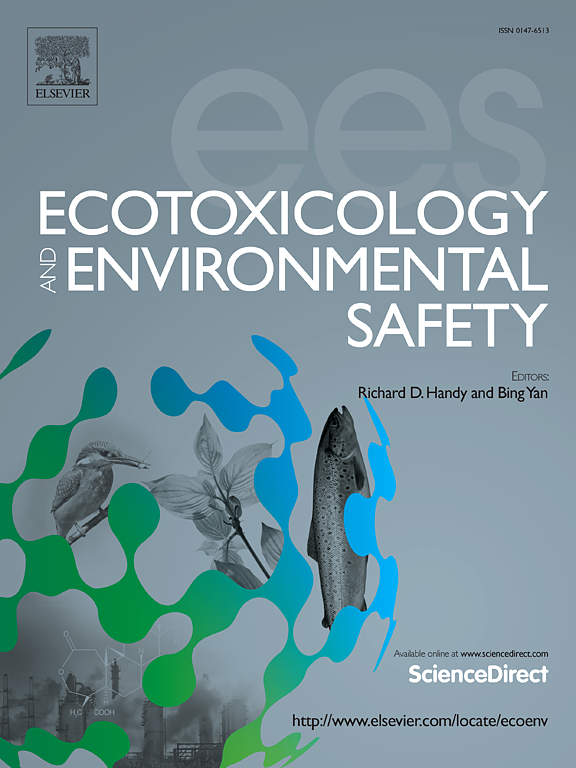Acute toxicity of three alkylbenzene sulfonates in six freshwater aquatic species
IF 6.2
2区 环境科学与生态学
Q1 ENVIRONMENTAL SCIENCES
引用次数: 0
Abstract
Alkylbenzene sulfonates (ABS) are surfactants widely used in residential and commercial products. To support the environmental risk assessment of these compounds, the acute toxicity of three ABS, linear (n-ABS), branched (BABS), and alkyl phenoxybenzene sulfonates (APBS), was evaluated using six aquatic organisms from different trophic levels (algae, daphnid, amphipod, mussel, snail, and fish). This approach allowed direct comparisons among species to provide insights into species sensitivity to these surfactants, and among compounds to provide information on those with a lack of ecotoxicity data (e.g., BABS, APBS). Endpoints related to survival, growth, and physiological changes were recorded. Comparisons among the three ABS were based on nominal concentrations due to the absence of pure analytical standards for APBS. However, analytical methods were developed for BABS and available for n-ABS, so effects of these compounds were also evaluated based on measured concentrations. Results showed differences in sensitivity among compounds for all species exposed to environmental concentrations of ABS, except for snails, which showed similar sensitivity to all surfactants and were among the most tolerant species. Based on nominal concentrations, the EC50/LC50 values for n-ABS, BABS, and APBS ranged, respectively, from 5.0 to 17.8 mg/L, 7.3 to 25.6 mg/L, and 3.5 to > 100 mg/L. The most sensitive species to n-ABS were fish, mussels, and amphipods, while amphipods and mussels were the most sensitive to BABS and APBS, respectively. Species sensitivity was also evaluated using measured concentrations of n-ABS and BABS. The results indicated that EC50/LC50 values varied from 1.24 to 13.13 mg/L and from 1.53 to 5.21 mg/L for n-ABS and BABS, respectively, and were in the range of concentrations reported in environmental surface waters. Amphipods and mussels could therefore be relevant sensitive model organisms for the environmental risk assessment of n-ABS and BABS.
求助全文
约1分钟内获得全文
求助全文
来源期刊
CiteScore
12.10
自引率
5.90%
发文量
1234
审稿时长
88 days
期刊介绍:
Ecotoxicology and Environmental Safety is a multi-disciplinary journal that focuses on understanding the exposure and effects of environmental contamination on organisms including human health. The scope of the journal covers three main themes. The topics within these themes, indicated below, include (but are not limited to) the following: Ecotoxicology、Environmental Chemistry、Environmental Safety etc.

 求助内容:
求助内容: 应助结果提醒方式:
应助结果提醒方式:


